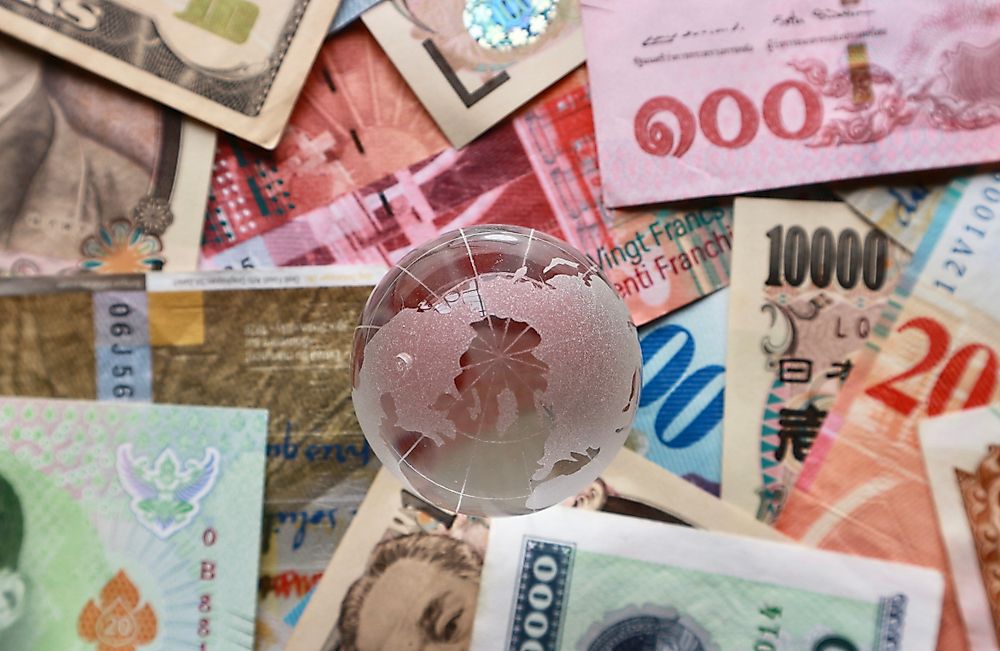How Many Currencies Exist in the World?

Currency refers to a legal tender, which includes all banknotes and coins used as a medium of exchange. The United Nations currently recognizes 180 currencies that are used in 195 countries across the world. The United States dollar is a popular currency, and about 66 countries either peg their currency to the US dollar or use it as their currency.
The History of Currencies
The use of currencies began during the ancient agrarian revolution, particularly in Egypt and Mesopotamia. Money at this point was the measure of grain stored in temples. The system was in use for over 1500 years before it collapsed, leading to the rise of metals as a store of value. At this point, gold, silver, and bronze were the metals used as currency. The discovery of the Archimedes' principle ensured that the value of the precious metal in a coin could be determined, which reduced cases of counterfeiting. Ancient China was the first to use banknotes due to the difficulty of completing major transactions using large quantities of coins. The introduction of coins was also meant to reduce the theft of gold and silver during transit. Coins and banknotes are currently the most widely used forms of currency.
The Dollar
The dollar is the most widely used currency, and is used by more than thirty countries spread across four continents. Of the many dollars, the United States dollar is the most commonly recognized and accepted.The US adopted the dollar in 1785 from the Spanish peso, which was known as the Spanish dollar in the United States at that time. In 1792, the Coinage Act introduced gold, silver and copper coins. Paper banknotes were adopted within the system in 1861. Other countries have adopted the term dollar for their currencies despite having no connection to the US dollar. The US dollar has the distinction of being the most traded currency in the world, and is closely followed by the euro.
The Euro
Officially adopted in 1995, the euro is the official currency used mainly by the Eurozone. The Eurozone is made up of 19 countries with a total population of more than 300 million people. The various countries that use the euro first had to abandon their independent currencies before adopting it. There are 25 countries that peg their currencies to the euro. Countries that use the euro have attained a large number of benefits such as reducing the transaction cost for businesses across borders. It also makes it easier for people to travel between countries. However, there are a few challenges that accompany the use of a common currency, which was heavily highlighted after the 2008 financial crisis.
The Rise of Cryptocurrencies
Growth in technology has led to the increase of digital currencies, such as bitcoin and ripple, that are used as alternative stores of value. There are currently over 4,000 cryptocurrencies available in the market, with bitcoin being the most popular and the most highly valued. Cryptocurrencies are different from traditional currencies in that they do not have a centralized system of control, but instead use blockchain technology. Blockchains are a continuously updated inventory of accounts that are protected using cryptographic methods. Mining is the primary way by which new coins are generated, mainly as a reward for increasing the blockchain network processing power. Cryptocurrencies are popular primarily because they protect the identity of the people using them.











